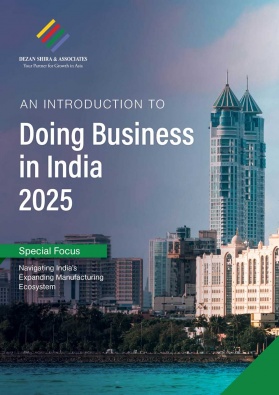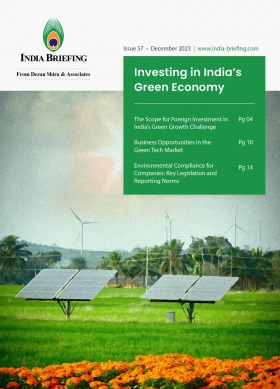India-Peru Trade Agreement: Bilateral Negotiations Ongoing
India and Peru are negotiating a bilateral trade agreement that will lower customs duties, address technical barriers to trade, and introduce dispute settlement mechanisms. The two countries concluded their 7th round of bilateral talks on April 11, 2024, with the next round scheduled for June in Lima.
The 8th round of trade negotiations between India and Peru is expected to take place in June this year in Peru’s capital city of Lima. Establishing a trade agreement is crucial for India to successfully tap into critical mineral reserves of lithium in the Latin American country.
Sunil Barthwal, Commerce Secretary, India, is now recommending that the negotiation process be guided by inputs from industry participants and stakeholders.
The frequency of recent discussions between India and Peru indicate both nations’ desire for further economic cooperation and bolstering two-way trade.
India and Peru enjoy long-standing diplomatic relations dating back to the 1960s.
Advancing the trade alliance between India and Peru
Recent advancements in trade negotiations between India and Peru demonstrate a common commitment to building a stronger and more advantageous bilateral trading framework. The discussions showcase the benefits of proactive moves on both sides to strengthen trade engagement and resolve trade-related disputes. This will become increasingly important amid the complexities of geopolitics and competition among countries pushing for the growth of their frontier industries, which will require access to critical minerals, among others.
Javier Manuel Paulinich Velarde, Peru’s ambassador to India, has expressed optimism about the progress made by the trade negotiations and the prospect of establishing a solid alliance. According to Velarde, Peru has 22 free trade agreements (FTAs) with 58 nations, which have immediately increased commerce, investment, and collaboration.
Peru has become India’s third-largest commercial partner from Latin America and the Caribbean group of nations. The value of two-way trade between Peru and India has grown over the past 20 years, from US$66 million in 2003 to an estimated US$3.68 billion in 2023. The trade deal under negotiation will be crucial to future industrial collaboration, opening doors for greater commercial investments and mutual gains for business stakeholders and consumer markets.
India-Peru bilateral trade
The fifth round of negotiations for the free trade agreement between Peru and India had concluded in August 2019, marking significant progress. Initiated in 2017, these talks resumed the sixth round in Lima – February 12-14, 2024 – after a hiatus due to the pandemic. That was quickly followed by the seventh round in Delhi, held from April 8-11, with the eighth round planned for June in Lima.
The Observatory of Economic Complexities, or OEC, estimates that trade relations between India and Peru are growing at a steady pace year-on-year. In 2022, Peru exported goods worth US$2.22 billion to India. The main products exported from Peru to India were gold (US$1.9 billion), copper ore (US$253 million), and calcium phosphates (US$12.7 million). As per trade estimates, the export basket of Peru to India has increased at an annualized rate of 25.5 percent, from US$4.84 million in 1995 to US$2.22 billion in 2022.
Similarly, India’s exports to Peru were estimated to be worth around US$1.09 billion as of 2022. The main products exported from India to Peru were automobiles (US$178 million), non-retail pure cotton yarn (US$155 million), and packaged medicaments (US$83.8 million). In the last 27 years, the size of exports from India to Peru has increased at an annualized rate of 13.3 percent, from US$37.2 million in 1995 to US$1.09 billion in 2022.
Peru is a significant producer of lead, zinc, gold, copper, and silver, in addition to lithium. It is widely believed that both countries are trying to lower or do away with customs tariffs on a number of items and loosen regulations to encourage trade in services. It may be worth noting that the two nations do not export any services to each other at the moment.
Outlook
The objective of the seventh round of trade negotiations was to comprehend the interests and concerns of each party and make sure that a prospective trade deal serves both countries equally. At present, India is prioritizing completing the trade agreement with Peru as part of its 100-day plan following a new government after the 2024 general elections.
The emphasis on a trade deal with Peru is consistent with India’s efforts to broaden its export markets, in terms of both product types and geographic areas. India sees a great deal of room for growth in bilateral trade with the Latin American and Caribbean countries, as Indian exports currently make up less than 2 percent of all imports in these countries.
India previously agreed to a limited trade agreement with Chile and the Mercosur countries of Uruguay, Paraguay, Argentina, Brazil, and Uruguay. Along with the trade talks with Peru, India is also negotiating free trade deals with Oman, the United Kingdom, and the European Union. The country recently signed a trade agreement with Iceland, Liechtenstein, Norway, and Switzerland – the four countries that make up the European Free Trade Association (EFTA).
About Us
India Briefing is one of five regional publications under the Asia Briefing brand. It is supported by Dezan Shira & Associates, a pan-Asia, multi-disciplinary professional services firm that assists foreign investors throughout Asia, including through offices in Delhi, Mumbai, and Bengaluru in India. Readers may write to india@dezshira.com for support on doing business in India. For a complimentary subscription to India Briefing’s content products, please click here.
Dezan Shira & Associates also maintains offices or has alliance partners assisting foreign investors in China, Hong Kong SAR, Dubai (UAE), Indonesia, Singapore, Vietnam, Philippines, Malaysia, Thailand, Bangladesh, Italy, Germany, the United States, and Australia.
- Previous Article India-ASEAN Trade Pact: Tariff Anomalies on Goods to be Reviewed
- Next Article India-Mauritius DTAA Amendment Closes Tax Avoidance Loophole








